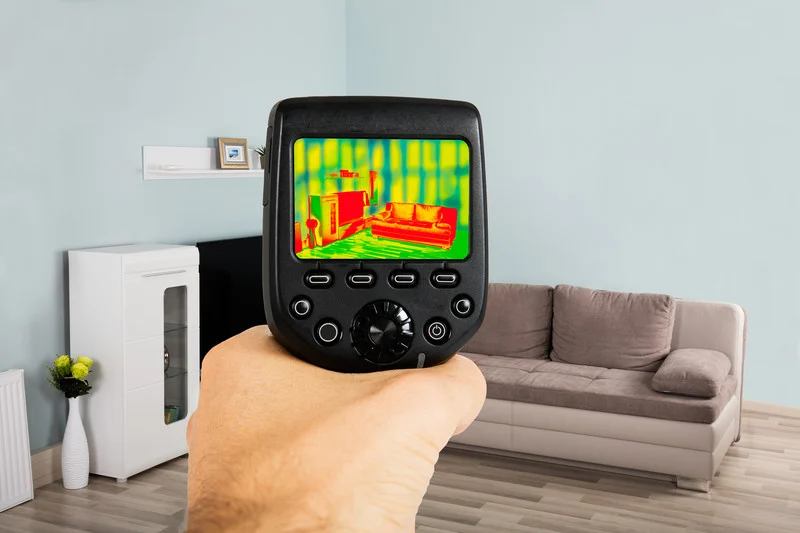How to locate Leakage with Laser Thermal Imaging technology?

Water holes and dampness penetration can cause genuine harm to a house or constructing, and can be hard to identify until it’s now past the point of no return. Utilizing a warm imaging camera and under the correct conditions, it’s feasible to discover covered up water and dampness issues without depending on dangerous testing.
There are numerous wellsprings of building dampness, including moistness (during any season), buildup, pipe holes, downpour and snow, and even individuals and creatures relaxing. Typically a low degree of dampness is fine, however breaks or weighty buildup can cause major issues. A warm imaging camera can’t “see” dampness in dividers, however it can recognize inconspicuous temperature contrasts and examples that uncover the presence of water.
Dampness Patterns
Dampness in structures generally spreads in a conspicuous example relying upon where the water is:
Dividers – hierarchical three-sided shape framed as water spreads downwards
Roof – indistinct, unstructured shape with spaces of wet, clammy, and soggy material spreading outwards with various temperatures
Flooding – water wicking up a divider into the protection and up divider studs
High temp Water Pipe – releases shows as a warm territory
Dampness is quite possibly the most troublesome issues to recognize in a structure – the signs are unpretentious and barely noticeable until water begins trickling from the roof. Thermography preparing can assist with ID, just as getting the correct camera for the work. You can also check for Roof Leak Repair NJ
What’s the Best Thermal Camera For Moisture Detection?
Dampness will in general reason just inconspicuous warmth differentials. A warm camera fit for identifying dampness needs to have high goal and extraordinary warm affectability (NETD), implying that little temperature contrasts will be shown.
On account of warm affectability, the lower the better, so a camera with 30mK affectability is incredible for dampness applications, while a 100mK affectability camera is more qualified for modern applications and identifying enormous temperature contrasts. It makes use of Thermal Laser technology, you can check more at laser here- Marcatrice laser prezzo
Likewise, it’s ideal to utilize a camera that permits you to physically change the level and length of the warm picture. Dampness issues show up best when the picture is adapted to about a 10°C or 20°C range, which levels minute temperature contrasts stick out.
Extraordinary warm cameras for this reason incorporate the FLIR E6 for fundamental applications, and FLIR E8 and FLIR E95 for higher goal alternatives.
Remember About Moisture Meters
Warm cameras can help find water and estimated the dampness degree, yet recognizing an example that seems as though dampness doesn’t ensure the presence of water. There are a huge number of reasons you may be seeing a temperature differential other than dampness in the dividers. To check what you’re seeing, you ought to consistently utilize a dampness meter to affirm what the warm camera has recognized.
Dampness meters from FLIR and Extech offer different recognition alternatives for each application, and meters like the FLIR MR176 even join both warm imaging and dampness estimation capacities for both finding and testing for dampness.
When playing out a structure examination searching for water spills, make certain to take as much time as necessary. Water is identified with a warm imager because of temperature contrasts brought about by vanishing, capacitance, or conduction, and these cycles can be influenced by climate conditions or inside mugginess. For a full comprehension of how warm imagers can recognize dampness, consider taking a thermography course through the Infrared Training Center.











